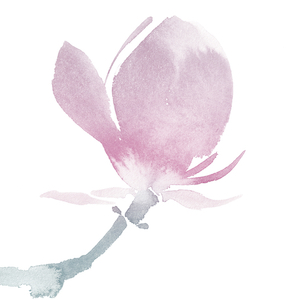Renaissance Symbols
By Louis Lefaix
What could that apple be possibly doing in this painting? Surely it was just added for detail or for colour. Well, it most likely isn’t just a simple apple. A lot of “basic” elements of our everyday lives can be found in Renaissance art pieces. But they aren’t placed there without purpose. Indeed, they hold meanings. And they can be compared to each being their own piece of a puzzle. When you have all the pieces you then can understand the message behind the art. But exactly what message could a candle or a dog express? Find out more as we look into this here in Renaissance Symbols.
Renaissance refers to a movement of rediscovery of classical art, philosophy and literature that took from the 14th century to the 17th century. Some of the symbols we are covering today, were used in painting before this period. But, it’s then that the meanings they have were established. The Renaissance period is rooted in Europe, so a lot of these elements are linked to Christianism.
The first type of Renaissance Symbols we are looking at are colours. The meanings these hold are probably the best-known ones, as they are somewhat intuitive.

Madonna and Child with Saints in the Enclosed Garden, Follower of Robert Campin c. 1440/1460, open access National Gallery collection
The bold Red, conveys excitement, and intensity, as it is the colour of blood. But, in Asia it is representative of luck. Now, the sweet Pink represents tenderness. The golden Yellow is a symbol of joy and optimism. The brilliant Blue, expresses peace, and tranquillity just like the skies. The vibrant Green is nature and health; it relates to forests, grass and their growth. Beaming White denotes purity and cleanliness. Whereas the deepness of Black represents power, but also death.
Next up we have elements of nature, to be precise vegetation.
We often find fruit in paintings; they would allow enhancing the realism and colour of the piece. But they also held meaning. For instance, Apples in relation to Christianity were a symbol of temptation and evil, as they were the forbidden fruit. (the garden of Eden)
Whilst those jewelled Pomegranates stood for desire and eternal life. Luscious Pears represented marital faith. Harmony was signified by the sweet Strawberry. Lemons could be a sour decision. whilst Grapes were symbols of pleasure in Greece relating to the Bacchus god of Wine.
Likewise, flowers also had different meanings. The beautiful red Carnation was a symbol of love, whereas the pink one symbol of marriage. The vibrant white Lily represented purity, virginity, it was the emblem of the Virgin. The fragrant Lavender portrayed desire. And innocence mirrored with the fresh Dandelion.

Gathering Lilies, Eastman Johnson 1865, open access National Gallery collection
The charming Tulip was wealth and prosperity. The blooming Orchid was jealousy and deceit. In Asian art, the cherished Lotus whose petals open and close with the sun rise and set, connotes birth and rebirth. The charming Sunflower, which blindly follows the sun, is a symbol of foolish passion. Finally, the distinctive Thistle and its thorns represent both evil and protection, so in Christianity, it illustrates Christ’s suffering.
Trees represented spiritual nourishment. They were and still are considered representatives of life, wisdom, power, and prosperity.
Now, we have animals. As you’re expecting they also hold certain meanings in paintings. Indeed, they can convey various messages.
The Hound one of the more common animals or the Dog symbolizes loyalty and fidelity. This way, a dog could be placed at the feet of a couple to emphasize their faithful bond. We can see this in Jan Van Eyck’s portrait of a married couple. In contrast, the malevolent serpent represents the sin of man and evil. The elegant Swan portrays purity. The Rabbit’s fecundity connotes fertility and lust. It’s often paired with representations of Venus, the ideal of feminine beauty.

Saint George and the Dragon, Raphael c. 1506, open access National Gallery collection
Birds can represent sacrifice or resurrection, life, or death. The Golden Finch or Robin hold significant meaning, from the legend in which they gain their red touch from a drop of blood from Christ on the cross. Immortality is expressed by the Peacock , it was used as a reminder of Christ’s resurrection. Magnificent Butterflies are also indicative of resurrection.
Monkeys were viewed as evil by Christians. But, in Renaissance art they were used as stand-ins for humans.
The brave Lion is a mark of courage. Cats represent lust, desire, and treason. Victory is embodied by the majestic and powerful White horse. And the innocent Lamb is a symbol of peace. There are many other significations attributed to animals in art.
Finally, we look into the meanings that man-made objects and structures carry in paintings.

A Concert, Cariani c. 1518-1520, open access National Gallery collection
In Renaissance paintings, the decor or props also held significance. For example, Gardens were used as a symbol of paradise. And Keys could be either considered as access to heaven or knowledge. Knowledge could also be represented by an Open book.
The instrument similar to a guitar, the Lute symbolized romantic love. Much like today, the passing of time was represented by the Hourglass. Bells were seen as transparency and clarity. Swords and Arrows symbols of war, they embody martyrdom.
Next time you’re taking a gander at a classical painting, you may find yourself able to interpret its meaning whithout the aid of an expert.
If you enjoyed reading Renaissance Symbols why not read Plot devices here
Find out more about the Open Access Collection at the National Gallery website here
.Cent Magazine London, Be inspired; Get involved





